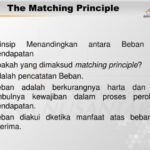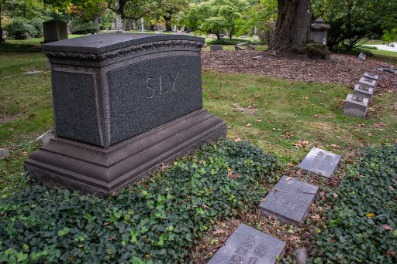
A shareholder may be eligible to defer the shareholder’s pro rata share of this gain under section 1045 if the shareholder purchases other QSB stock during the 60-day period that began on the date the QSB stock was sold by the corporation. Report each shareholder’s pro rata share of net section 1231 gain (loss) in box 9 of Schedule K-1. If the corporation has more than one rental, trade, or business activity, identify on an attachment to Schedule K-1 the amount of section 1231 gain how to calculate prepaid rent expenses (loss) from each separate activity. If any gain or loss from line 7 or 15 of Schedule D is from the disposition of nondepreciable personal property used in a trade or business, it may not be treated as portfolio income. Instead, report it on line 10 of Schedule K and report each shareholder’s pro rata share in box 10 of Schedule K-1 using code ZZ. Business interest expense includes any interest paid or accrued on indebtedness properly allocable to a trade or business.

What Is the Purpose of Form 1120-S?
- A corporation that doesn’t pay the tax when due may generally be penalized ½ of 1% of the unpaid tax for each month or part of a month the tax isn’t paid, up to a maximum of 25% of the unpaid tax.
- If the corporation claims a credit for any wages paid or incurred, it may need to reduce the amounts on lines 7 and 8.
- Enter on line 16b all income of the corporation exempt from tax other than tax-exempt interest (for example, life insurance proceeds, but see section 101(j) for limits and reporting requirements).
- Enter cash and credit refunds the corporation made to customers for returned merchandise, rebates, and other allowances made on gross receipts or sales.
- Keep records that verify the corporation’s basis in property for as long as they are needed to figure the basis of the original or replacement property.
If you are an S corporation then you may be liable for…
Instructions for Form 1120-S – Notices
This form is known officially as Election by a Small Business Corporation. S corp gets its name from Subchapter S of the Internal Revenue Code, under which it has elected to be taxed. But you should try to base it on position, experience, business size and what a comparable position at another company in your industry would earn.
What IRS tax forms do S corps file?
This may include, but isn’t limited to, items such as ordinary business income or losses, section 1231 gains or losses, section 179 deductions, and interest from debt-financed distributions. The S corporation must report the pro rata share of qualified items of income, gain, deduction, and loss from a PTP so that shareholders can determine their qualified PTP income. However, W-2 wages and UBIA of qualified property from the PTP shouldn’t be reported because shareholders can’t use that information in figuring their QBI deduction. The acknowledgment must be obtained by the due date (including extensions) of the corporation’s return, or, if earlier, the date the return is filed. Don’t attach the allowance for doubtful accounts acknowledgment to the tax return, but keep it with the corporation’s records. These rules apply in addition to the filing requirements for Form 8283, Noncash Charitable Contributions, described under Contributions of property , later.
How to file taxes as an S corporation
The form can be filed electronically or by mail and must be accompanied by Schedule K-1. This schedule identifies individual shareholders in the S corporation along with the portion of income, profit, loss, tax credits, and deductions that are allocated to each of them. The determination of whether rental real estate constitutes a trade or business for purposes of the QBI deduction is made by the S corporation. The S corporation must first make this determination and then only include the pro rata share of QBI information for rental real estate that constitutes a trade or business on the statement provided to shareholders. Rental real estate that doesn’t meet any of the three conditions noted above doesn’t constitute a trade or business for purposes of the QBI deduction and must not be included in the QBI information provided to shareholders. Each shareholder must determine if he or she materially participated in an activity.
On an attached statement to Schedule K-1, provide any information shareholders will need to report recapture of credits (other than recapture of low-income housing credit and investment credit reported on Schedule K-1 using codes E, F, and G). The following are examples of credits subject to recapture and reported using code H. If the corporation is reporting items of income or deduction for oil, gas, and geothermal properties, you may be required to identify these items on a statement attached to Schedule K-1 (see the instructions for lines 15d and 15e). Also see the requirement for an attached statement in the instructions for line 15f. Enter on line 13g any other credit, except credits or expenditures shown or listed for lines 13a through 13f or the credit for federal tax paid on fuels (which is reported on line 24c of page 1). On the line to the left of the entry space for line 13g, identify the type of credit.
Enter each shareholder’s pro rata share of ordinary business income (loss) in box 1 of Schedule K-1. For example, if the corporation has more than one trade or business activity, identify the amount from each activity. In general, section 469 limits the amount of losses, deductions, and credits that shareholders can claim from “passive activities.” The passive activity limitations don’t apply to the corporation. Instead, they apply to each shareholder’s share of any income or loss and credit attributable to a passive activity. Because the treatment of each shareholder’s share of corporate income or loss and credit depends on the nature of the activity that generated it, the corporation must report income or loss and credits separately for each activity. Don’t include these cash budget template contributions in the amounts reported in box 12 of Schedule K-1 because shareholders must separately determine if they qualify for the 50% or 100% AGI limitation for these contributions.
Enter on line 16c nondeductible expenses paid or incurred by the corporation. This is the total amount of credits determined by the S corporation for which an elective payment election is being made. Enter the total amount of gross income (within the meaning of section 613(a)) from all oil, gas, and geothermal properties received or accrued during the tax year and included on page 1, Form 1120-S. Give each shareholder a statement that shows the separate amounts included in the computation of the amounts on lines 15d and 15e of Schedule K. For property placed in service after 1998, refigure depreciation for the AMT only for property depreciated for the regular tax using the 200% declining balance method. For the AMT, use the 150% declining balance method, switching to the straight line method the first tax year it gives a larger deduction, and the same convention and recovery period used for the regular tax.